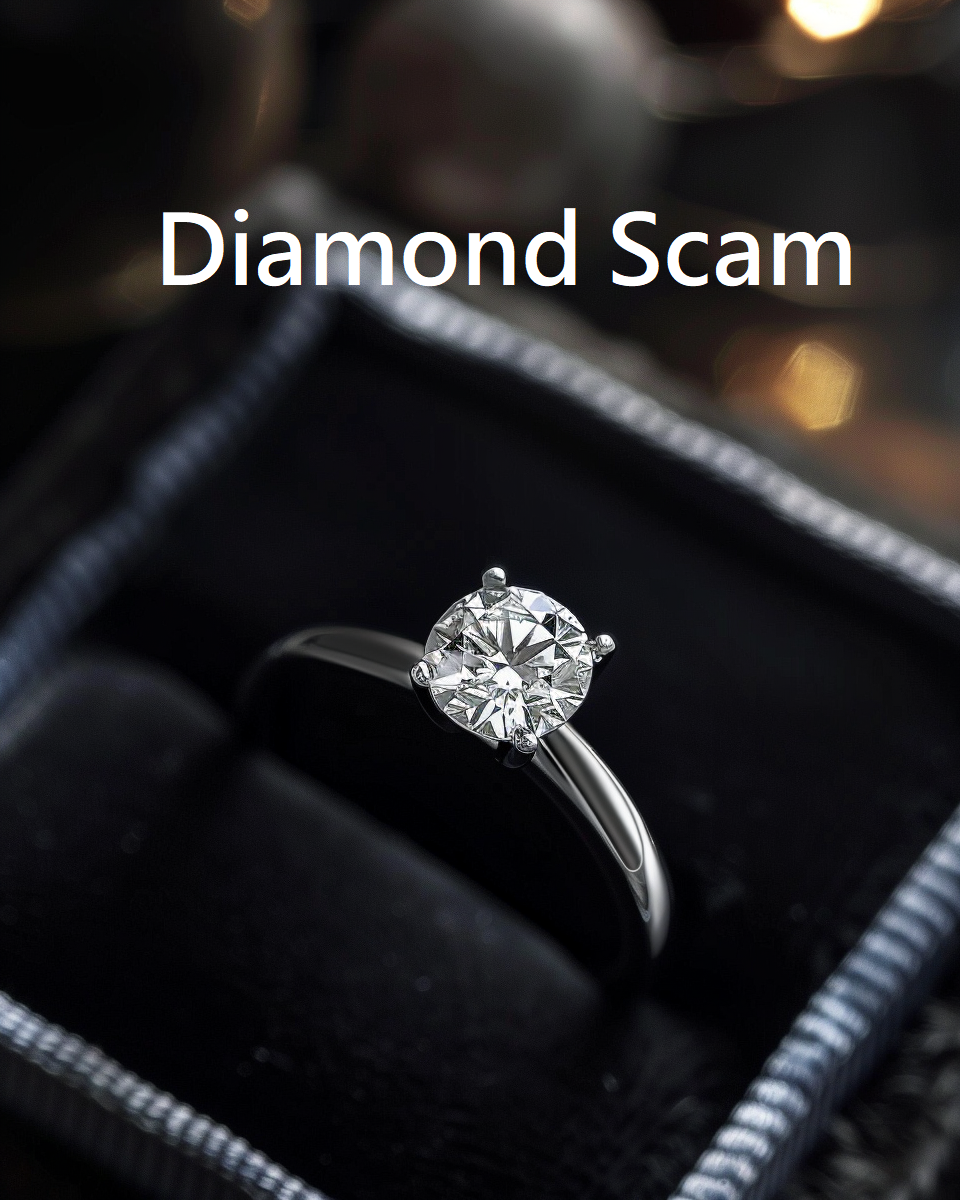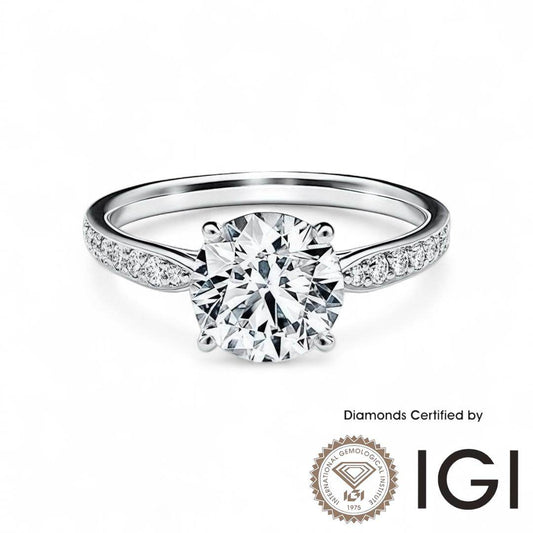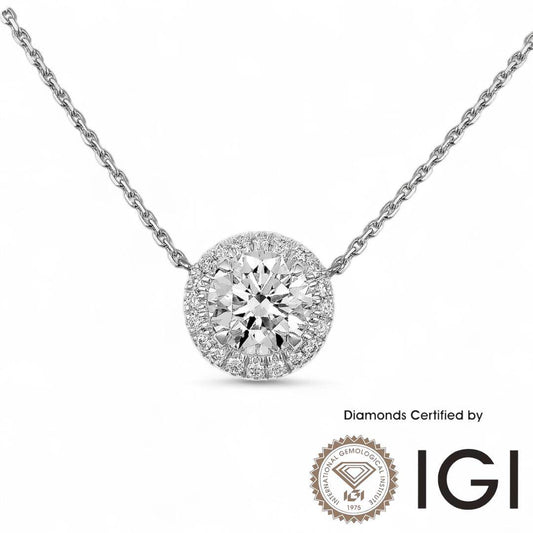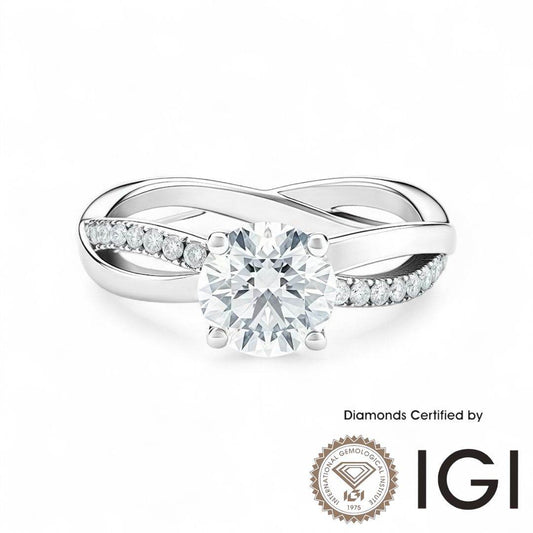Why Buying Natural Diamonds Carries High Risk, While Lab-Grown Diamonds Are Much Safer
Based on the expertise and experience of our Diamond Team, this guide is designed to help customers navigate the complex world of diamond purchasing. It provides a comprehensive overview of why buying natural diamonds can be a high-risk endeavor due to the potential for fraud, and why lab-grown diamonds offer a much safer alternative. By understanding the risks associated with misrepresentation and certificate swapping, you can make a more informed and confident decision.
When people buy diamonds, the biggest risk is not about the stone’s brilliance or beauty — it is about authenticity. Diamonds, by nature, are expensive, and wherever high prices exist, fraud follows. Unfortunately, one of the most common international scams in the diamond market is passing off a lab-grown diamond as a natural diamond.
1. What Does "Misrepresentation" Mean?
In the diamond trade, “misrepresentation” refers to selling one type of diamond as another, usually a cheaper product disguised as something far more expensive.
A classic example:
Unscrupulous sellers take a lab-grown diamond (which is chemically and physically identical to a natural diamond)
Then they engrave a real GIA natural diamond certificate number onto it
Finally, they present it to customers as a natural diamond with certification.
This is often called a “certificate swap” scam.
Because lab-grown diamonds and natural diamonds share the exact same chemical composition (both are pure carbon in a crystalline structure), even a GIA-trained gemologist cannot identify the difference with the naked eye. The only reliable way to distinguish them is to send the stone to a laboratory equipped with highly advanced machines.
That is why this kind of fraud is extremely common worldwide.
2. Why Lab-Grown Diamonds Are Much Lower Risk
Now you might ask: if fraud is such a big problem, why is it safer to buy lab-grown diamonds?
The answer lies in economics and motivation.
Lab-grown diamonds are already affordable and transparent in pricing. For example, at MadisonDia.com, a 1-carat, D color, VVS2, 3EX cut IGI-certified lab diamond costs just 2,142 HKD.
The majority of this price comes not from the raw material (which is inexpensive to produce) but from the precision cutting cost and the IGI certification fee.
If a dishonest jeweler wanted to “fake” a lab-grown diamond certificate, the profit margin would be so small that it wouldn’t justify the legal and reputational risks. In simple terms:
👉 The incentive to cheat is very low.
This is why misrepresentation with lab-grown diamonds is rare compared to the natural diamond market.
3. What Is the Real Risk With Lab-Grown Diamonds?
The only common “substitution fraud” in the lab-grown diamond market involves moissanite.
Moissanite looks similar to a diamond at first glance but costs only a fraction of the price. Some unethical sellers may try to sell a piece of moissanite for 2,000 HKD or more, pretending it’s a lab-grown diamond, even though the actual cost is only a few dollars.
However, the difference between moissanite and a diamond is visible to the naked eye for anyone with basic diamond knowledge:
- Moissanite reflects a rainbow-like sparkle, while diamonds give a sharper white brilliance.
- Under a jeweler’s loupe, the difference is immediately clear.
Therefore, this type of scam only works on customers who have absolutely no knowledge about diamonds. That’s why we always recommend buyers educate themselves with simple guides — for example, see our article “How to Differentiate Between Moissanite and Diamonds.”
4. The Conclusion: Which Diamond Is Safer to Buy?
Natural Diamonds → High risk of fraud, because lab-grown diamonds can be disguised as natural ones, even with “real” certificate numbers engraved. Detection requires laboratory testing, and the financial loss can be huge.
Lab-Grown Diamonds → Lower risk, because they are affordable, transparent in pricing, and the profit margin for fraudulent substitutions is minimal. The only common scam is swapping with moissanite, but that is easy to detect with a little knowledge.
In other words:
💎 Buying natural diamonds exposes you to significant risk. Buying lab-grown diamonds dramatically reduces that risk.
If your goal is to enjoy the beauty and brilliance of diamonds without unnecessary exposure to fraud, lab-grown diamonds are the safer, smarter choice.
IGI found a fraud case : IGI Official reporting
Frequently Asked Questions (FAQs) about the risks of buying natural diamonds versus the safety of lab-grown diamonds
Q: What is the main risk when buying a natural diamond? A: The primary risk is fraud, specifically "misrepresentation," where a more expensive natural diamond is swapped with a less expensive lab-grown diamond.
Q: How does a "certificate swap" scam work? A: This scam involves taking a genuine GIA natural diamond certificate number and engraving it onto a lab-grown diamond. Because the two types of diamonds are chemically identical and look the same to the naked eye, it's very difficult for the buyer to detect the fraud.
Q: Why are lab-grown diamonds considered a safer choice? A: Lab-grown diamonds are a safer option due to their affordability and transparent pricing. This significantly reduces the financial incentive for fraud, as the profit margin for a scam would be too low to justify the legal and reputational risks.
Q: Are there any scams in the lab-grown diamond market? A: While fraud is less common, the article mentions one possible scam: selling a moissanite stone as a lab-grown diamond. However, this is relatively easy to detect as moissanite has a different sparkle and appearance under a jeweler's loupe.
Q: How can a buyer protect themselves from these risks? A: The article suggests that because natural diamonds carry a high risk of fraud, choosing to buy a lab-grown diamond is the safer and smarter choice for consumers.
Author Bio— Winston Wu, Marketing Directors of Kardias Fashion Group, has focused on luxury procurement since 2012, deeply collaborating with European first-tier brands such as Versace, Moschino, Hugo Boss, and Roberto Cavalli, with rich practical experience in the diamond market.
Publication Date: 20 August 2025 Last Updated: 4 September 2025
Disclaimer: The price information provided in this article is based on January 2025 market data. Actual prices may vary due to market fluctuations. Please confirm the latest quotes with vendors before purchasing. This article does not constitute investment advice.
This article is jointly published by Luxury Boutique Madison Avenue





